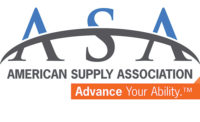May 4, 2007 - H.R. 2076 “Lead-Free Drinking Water Act Of 2007” Introduced In Congress

H.R. 2076 proposes to amend the Safe Drinking Water Act to establish maximum lead levels for drinking water through restricting the amount of lead used in the production of bathroom fixtures and fittings.
Rep. Eleanor Holmes Norton (D.C.) and Oversight and Government Reform Committee Chairman Henry A. Waxman have re-introduced H.R. 2076, the “Lead-Free Drinking Water Act of 2007.” A statement from Rep. Norton reports that she, Rep. Waxman and former Sen. James Jeffords (I-Vt.) looked at the 1974 Safe Drinking Water Act (SDWA) and the Lead and Copper Rule and determined that even with the revision of the Rule in 1991, it did not meet standards that they feel should have been adopted at that time. H.R. 2076 would establish “a maximum contaminant level for lead in drinking water as measured at the tap; or if it is not practicable to establish such a level with adequate provision for variability and factors outside of the control of a public water system, establish a treatment technique to achieve an action level for lead that is at least as stringent as the action level established by the national primary drinking water regulation for lead under subpart I of part 141 of Title 40, Code of Federal Regulations.”
In summary, the bill would ban after five years of the bill’s enactment the use of products that are not “lead free” for providing water for human ingestion (including water for bathing). This ban would apply to residences, commercial facilities and public water systems. Second, it defines “high lead” as any pipe or plumbing fitting or fixture with a lead content greater than 2 percent (it excludes porcelain items or any fitting that does not come into contact with drinking water). “High lead” products (greater than 2 percent) are banned 1 year after enactment of the bill.
The bill would require the following:
1) Valid Testing. This bill eliminates the loophole that allowed the D.C. Water and Sewer Authority (WASA) to continue testing once it exceeded the 15 parts per billion (ppb) action level. Instead, 10% of lead pipes must be replaced until all are eliminated.
2) Total Lead Service Line Replacement. Instead of replacing only publicly owned lead service lines, this bill requires total replacement, including the portion owned by the homeowner. Norton says the hearings showed that partial replacement can actually increase the amount of lead in drinking water, because the new metal, such as brass or copper, can interact with the remaining lead pipe and accelerate lead leaching into the drinking water.
3) Individual Notice From Detection to Correction. The bill requires notice to all customers individually within 30 days of lead exceedence, stating the scope of testing, results and corrective actions.
4) Alternative Water Supply. Where excessive lead is found, the bill requires that certified water filters be provided to each residence, school and day care facility.
5) Testing Water Treatment Chemicals. The bill requires water systems to have corrosion control plans within one year of switching chemical treatment or a finding of excessive lead in the water.
6) Lead Free Plumbing. “Lead free” in this bill is defined as 0.2%, the standard already used in Los Angeles, down from the current 8%. Norton reports that she heard testimony at the hearings that most brass and copper plumbing contains 8% lead.
7) Lead Testing In Schools. This bill requires the repair or replacement of school water coolers found to have excessive lead. Annual testing of water coolers in schools is also required.
Looking for a reprint of this article?
From high-res PDFs to custom plaques, order your copy today!





